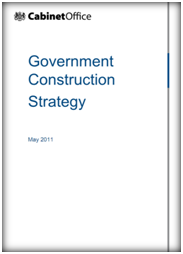Clobberation … what’s this then?
I thought I was being clever by making up the word clobberation to mean opposite to collaboration; but apparently not … just google it! It’s been in my head for some time that, whilst the emphasis in construction is to promote collaborative working arrangements, in reality the majority of work is carried out in the traditional transactional way … where it’s more clobberation rather than collaboration!
At a recent BECi* event Tim Fitch emphasised the benefits of collaboration in his talk on the “Adventures of Collaboration from Sub-Contracting to Mega Projects“. Tim’s key point is that collaboration is a better way of managing risk and creating value in order to deliver outcomes to the satisfaction of clients.
Why doesn’t everyone do it then?
Tim’s view is that collaboration can be for everyone and every size of project, but it requires leadership, firstly on the client side and then on supply side. In other words, for collaboration to work effectively, it must be an integral behaviour of those in charge. Moreover, trust needs to be built on both sides and this is often demonstrated by parties giving something up, normally some aspect of control. Collaboration is not an easy option, but the rewards are available in better client satisfaction, profits and repeat work for starters.
Tim gave illustrations of how collaboration has and has not worked. In all cases, it is important to establish collaboration as a core part of procurement and ensure the right behaviours are incorporated into the project from the outset; in other words avoid establishing a transactional approach that inhibits effective collaboration. The British Standard, BS11000, provides a framework for establishing Collaborative Business Relationships – for more information, visit Tim’s website or visit the Linkedin Group.
Tim concluded with a view on the future for collaboration in construction, citing the biggest barrier to wider adoption as the cyclical nature of construction demand. However, Tim was confident that with the right leadership and by developing the right relationships, collaboration, not clobberation, is the way to achieve successful outcomes.
Click here for the event Storify.
*BECi (Built Environment Collaboration and Integration) is the part of the Faculty of Architecture and the Built Environment at the University of Westminster. If you are interested in talking as part of the next series of BECi talks, please leave a comment below.


